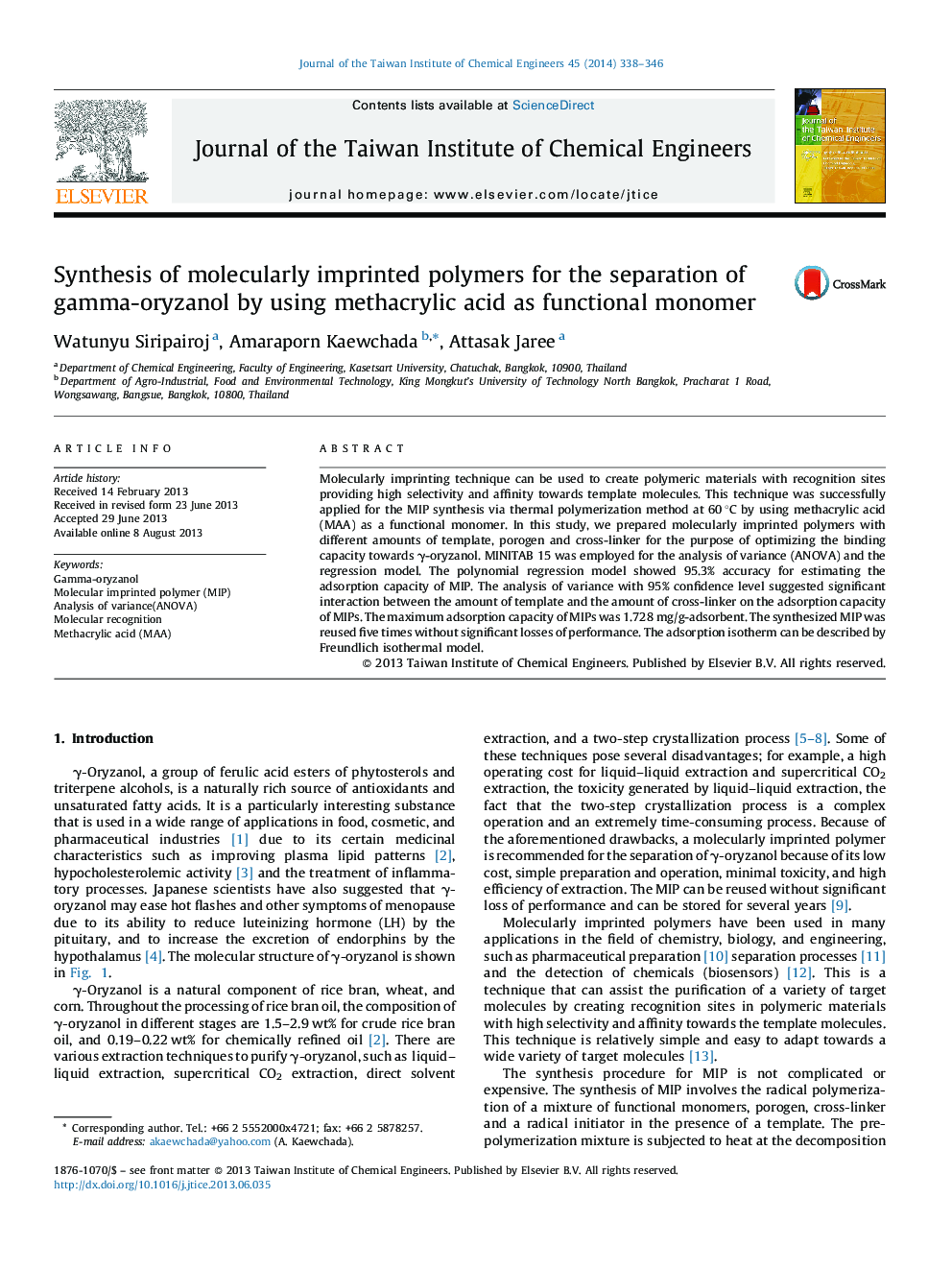| Article ID | Journal | Published Year | Pages | File Type |
|---|---|---|---|---|
| 691369 | Journal of the Taiwan Institute of Chemical Engineers | 2014 | 9 Pages |
•Molecularly imprinted polymers for adsorption of gamma-oryzanol were successfully synthesized from methacrylic acid.•Experimental design and analysis of variance were used to interpret the effects (main and interaction) of porogen, template and cross-linker on the adsorption capacity towards gamma-oryzanol.•Regression analysis suggested a polynomial correlation predicting the adsorption capacity of MIP for the separation of gamma-oryzanol.•Effect of particle size and the adsorption isotherm were studied.
Molecularly imprinting technique can be used to create polymeric materials with recognition sites providing high selectivity and affinity towards template molecules. This technique was successfully applied for the MIP synthesis via thermal polymerization method at 60 °C by using methacrylic acid (MAA) as a functional monomer. In this study, we prepared molecularly imprinted polymers with different amounts of template, porogen and cross-linker for the purpose of optimizing the binding capacity towards γ-oryzanol. MINITAB 15 was employed for the analysis of variance (ANOVA) and the regression model. The polynomial regression model showed 95.3% accuracy for estimating the adsorption capacity of MIP. The analysis of variance with 95% confidence level suggested significant interaction between the amount of template and the amount of cross-linker on the adsorption capacity of MIPs. The maximum adsorption capacity of MIPs was 1.728 mg/g-adsorbent. The synthesized MIP was reused five times without significant losses of performance. The adsorption isotherm can be described by Freundlich isothermal model.
